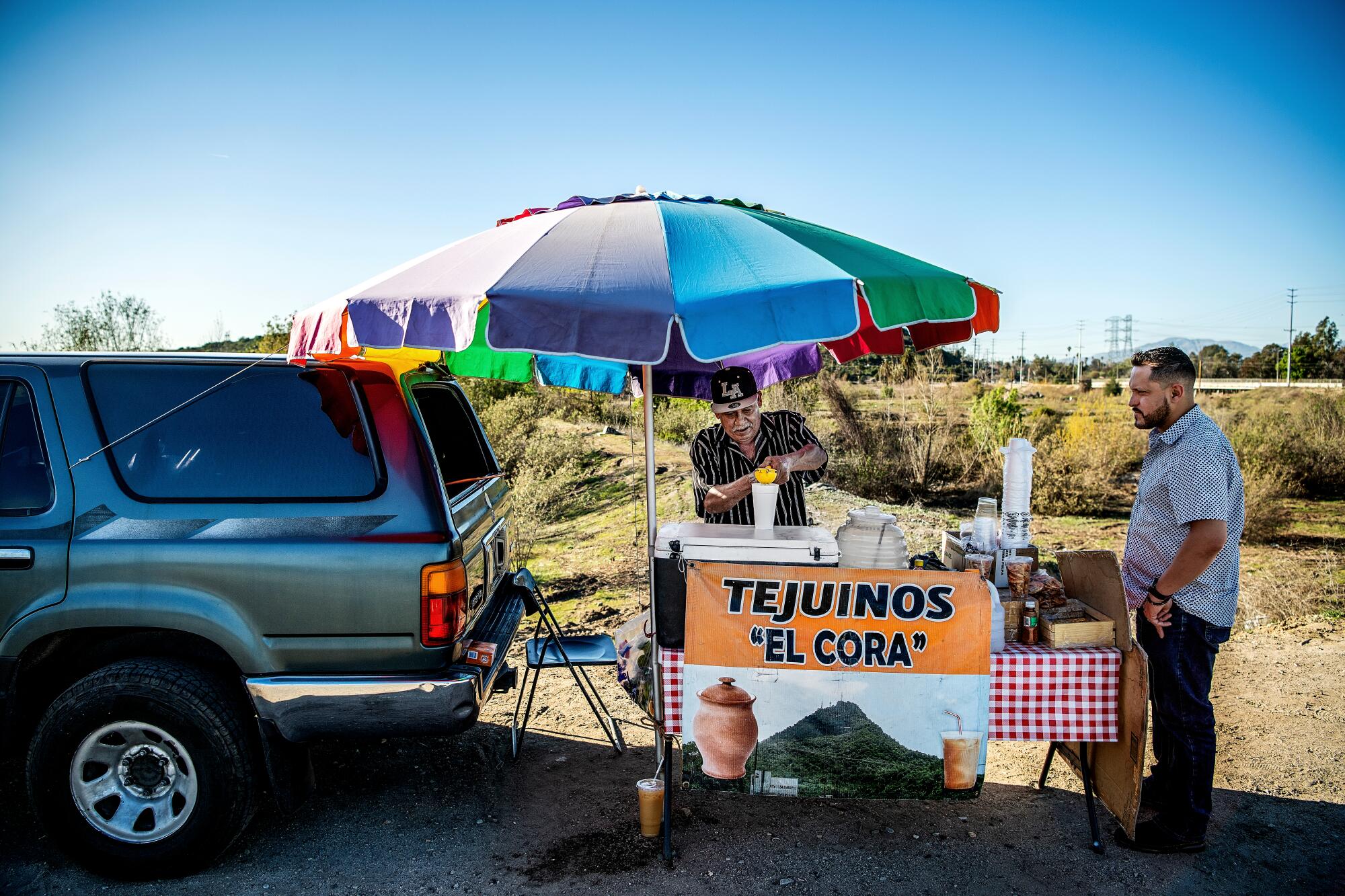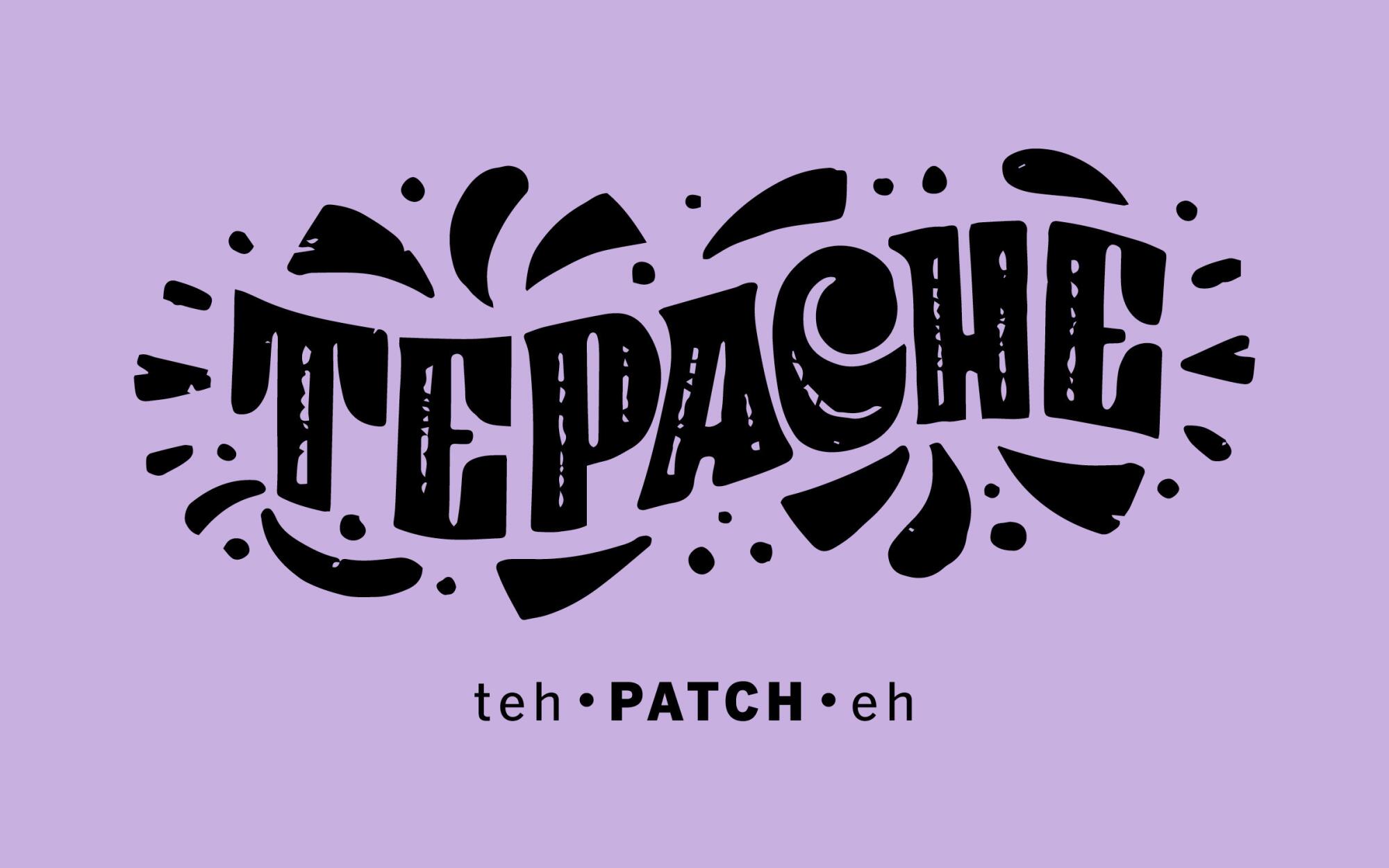
Pulque, tejuino, tepache: how to tell you’re drinking the good stuff.
- Share via
First, you should know there are many fermented drinks made in Mexico and throughout Latin America. In the state of Colima, for example, people make a drink of fermented palm sap known as tuba. In the chilly mountains of the state of Puebla, sidra, or apple cider, is common. A 2021 academic paper identified 16 artisanal fermented alcoholic drinks throughout the country. But for our purposes in Los Angeles, we’re focusing on the three — tejuino, tepache and pulque — discussed in the accompanying story.
Study of these drinks is still relatively scarce, and they’re not for everyone. For now, microbiological analyses show such rustic fermented beverages contain loads of probiotic enzymes, amino acids and vitamins that replenish the gut microbiome and help drinkers maintain healthy immune systems, according to Martha Giles-Gómez, a microbiology professor at the National Autonomous University of Mexico.
If you’re a first-time drinker, here’s what you need to know to make sure you’re getting the good stuff. I’ve sorted each drink on a 1-5 scale (5 is the highest value), according to four categories: how available it is; how reliable the quality of the drink is; how generally drinkable it is, with the most mainstream or mild taste buds in mind; and the alcohol content.
Know of any other restaurants or vendors that offer good tejuino, tepache or pulque? Let me know!
Tepache, tejuino and pulque are rustic beverages with Indigenous roots, yet they’re still barely known north of the border.

Made with mashed corn or corn flour, it’s cooked down with Mexican brown sugar, or piloncillo, and left to stand for two to three days.
Availability

A handful of stands in the San Gabriel Valley and Southeast L.A. County sell it during the day. Tequileros Tejuino & Snackbar (4500 Rosemead Blvd., Pico Rivera) makes possibly the best version of the drink locally. The family behind the store also sells from a street stall nearby. Expect it to be served to-go, in foam cups.
Reliability

Many vendors say they offer tejuino, but a bit of interrogation may indicate otherwise. Wary of being associated with alcohol consumption, some vendors do not push their drink to fermentation, but it must be for it to be called tejuino; otherwise, it’s a form of agua fresca de maíz — sugary corn water.

Drinkability

This drink should be brown with almost no sediment, with the appearance of an iced coffee or chai. The base flavor is sour with a layer of sweetness from the brown sugars cooked in. The traditional preparation includes fresh-squeezed lime juice and a dash of sea salt. Ice is essential.
Alcohol

It rarely reaches any measurable potency (one study places its ethanol content at 1%). But a common practice with this drink is the “piquete,” or spike. Tejuino lovers in western Mexico sometimes enjoy it with an added shot of tequila once they take it home. In Guadalajara, younger aficionados have taken to the “tejuichela” — tejuino with beer.

It’s made with pineapple rinds that are fermented at room temperature with piloncillo, and often cinnamon and clove, for two to four days and then chilled.
Availability

Many U.S. companies are attempting to commercialize nonalcoholic tepache; I found a bottle called Tepachito at my neighborhood liquor store. Erewhon markets sell De La Calle varieties and a brand called Big Easy. Local home-kitchen sellers are abundant. At Madre, the Oaxacan mezcalería from Ivan Vasquez, the bar offers an espadín cocktail that uses a house tepache, called Chido Wey! (801 N. Fairfax Ave., #101, Los Angeles). You can also find vendors selling tepache in and around the Alameda Swap Meet (4501 S. Alameda St., Los Angeles).
Reliability

It’s hard to screw up tepache. Most canned or bottled versions of the drink are fizzy and consistent with a clear amber color; most also contain added flavors, as De La Calle’s growing array of offerings shows. Tepache also is remarkably easy to make at home. A recipe from The Times requires nothing more than rinds, cinnamon, brown sugar, water, a pitcher and cheesecloth.

Drinkability

The lightest of our three beverages and the easiest to start with, tepache is crisp, not too tart. It is similar in texture and experience to a standard ginger beer or any kombucha. Drink it with or without ice. If all processed colas in Mexico were replaced by tepaches, it probably wouldn’t be the second-most-obese country in the world right now — after the United States.
Alcohol

Tepache does not get very alcoholic during its preparation, and the labels of most canned tepaches on the market state there is no alcohol content at all. That said, tepache is the beverage that most lends itself to mixing and goes well with just about any liquor at hand, from mezcal to rum.

Made with agave sap, also known as aguamiel, it’s left to ferment for three to four days or longer. Flavors are often blended in to transform a glass of pulque into a “curado,” giving pulque servings a range of colors. My favorite curados, from many pulquería visits, include coconut, guayaba, oatmeal, peanut and pine nut.
Availability

The restaurant Aquí es Texcoco (5850 S. Eastern Ave., Commerce) offers plain pulque and rotating curados — replicating a typical weekend big-lunch experience in the Mexican city of the same name. Barbacoa is the central dish at this restaurant, and it pairs perfectly with the pulque, which is highly drinkable. La Barbacha (2510 E. Cesar E. Chavez Ave., Boyle Heights) also offers excellent barbacoa and good pulque. Two street vendors in or around the Mercado Olympic, known in English as the Piñata District, on Olympic Boulevard, sell pulque on weekend mornings. Quality swings wildly.
Reliability

Pulque is capricious. As days pass, it turns sour and flat, or its viscosity becomes overwhelming. Some pulqueros say it is best to wait until after the rainy season in Mexico to drink it. Since there is no known production of the drink locally, any pulque you drink in L.A. is presumably brought from Mexico. Freshness is elusive. I can’t trust any pulque that is canned or bottled — for now — as the necessary pasteurization process kills fermentation.

Drinkability

It’s not for the queasy (people describe the drink as similar to the consistency of saliva). In Mexico City pulquerías, it’s common for vendors to attempt to extend the drink’s shelf life by mixing in questionable additives such as sodium bicarbonate or nopal sap. And know this: Because of the drink’s complex probiotic cultures, someone drinking it for the very first time may experience a sudden “flushing” of their stomach, so be warned! “It is literally a ‘living’ drink. There are huge quantities of microorganisms and lactic bacterias” in pulque, says Giles-Gómez.
Alcohol

Pulque’s punch can be deceiving. Giles-Gómez and other researchers measure its alcohol content at about 5%, but some have clocked in at 8%, much like a muscular IPA. Remember that Indigenous peoples used pulque in pre-Hispanic religious ceremonies, and in rural settings to this day, it is given to mothers who are nursing and to the elderly. Drinking pulque produces an effect of contentment or even a philosophical mindset. Buzz-induced smiles are inevitable.
More to Read
Eat your way across L.A.
Get our weekly Tasting Notes newsletter for reviews, news and more.
You may occasionally receive promotional content from the Los Angeles Times.









